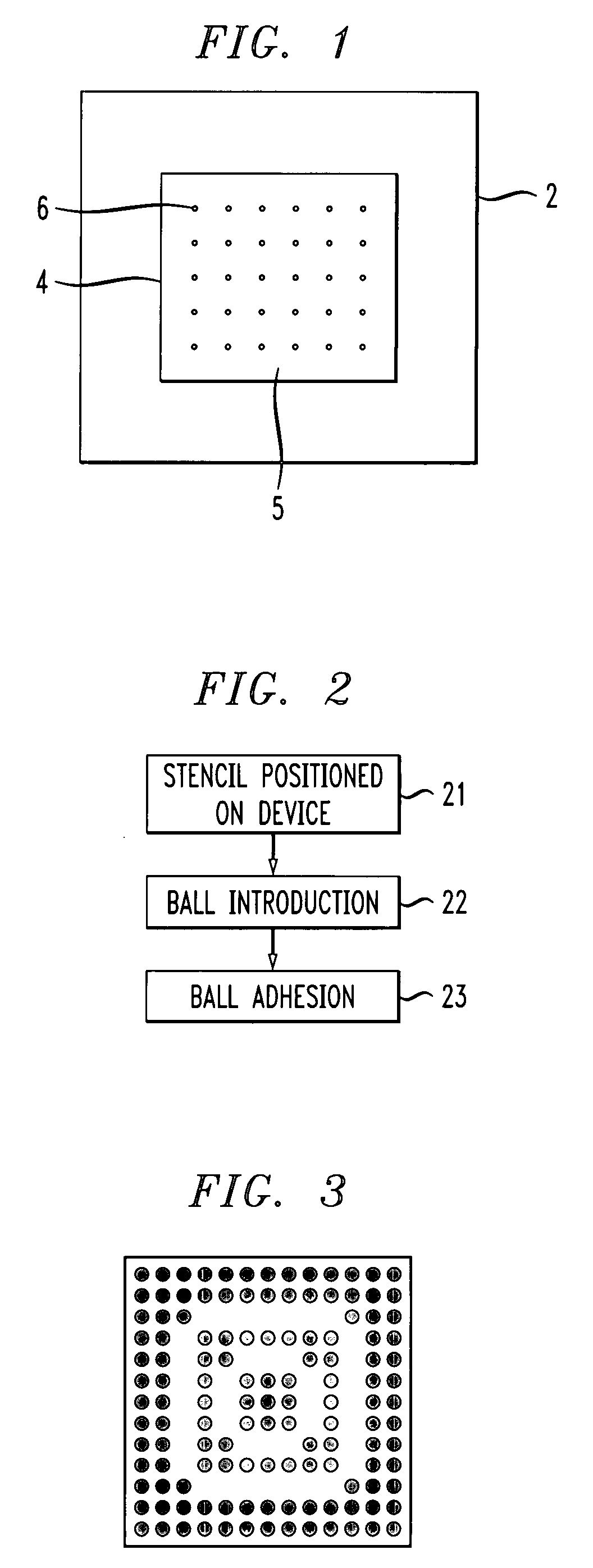Device packages
a technology for devices and packaging, applied in the field of device packaging, can solve the problems of low stencil material and processing cost, device not having a planar surface, and stencils that are typically not reuseable, and achieve the effects of reducing the procedure involving fixtures, reducing costs and delays, and easy and precise positioning
- Summary
- Abstract
- Description
- Claims
- Application Information
AI Technical Summary
Benefits of technology
Problems solved by technology
Method used
Image
Examples
example
[0021]An AutoCAD 2000 drawing program was employed to produce a representation of the desired array (shown in FIG. 3) for an Agere Systems 225 VTFSBGAB package type with darkened circles representing corresponding stencil holes and lines corresponding to the stencil boundaries. The holes had a diameter of 0.016 inches and the center to center spacing between adjacent holes as shown in FIG. 3 was 0.65 mm. The resulting computer file was loaded onto a floppy disk and then transferred to the host computer (Apple Power Macintosh 8500 computer) for a Markem 612 Platemaker. Using the Adobe Photoshop 3.0 program, the stencil file was loaded into the Photoshop program and subsequently a graphic picture of the stencil loaded in the computer's clipboard. The operating software for the Markem Platemaker was opened and a sample plate file was loaded and then cleared to create a blank image. The stored image of the array pattern on the clipboard was loaded on the plate file using a command denom...
PUM
 Login to View More
Login to View More Abstract
Description
Claims
Application Information
 Login to View More
Login to View More - R&D
- Intellectual Property
- Life Sciences
- Materials
- Tech Scout
- Unparalleled Data Quality
- Higher Quality Content
- 60% Fewer Hallucinations
Browse by: Latest US Patents, China's latest patents, Technical Efficacy Thesaurus, Application Domain, Technology Topic, Popular Technical Reports.
© 2025 PatSnap. All rights reserved.Legal|Privacy policy|Modern Slavery Act Transparency Statement|Sitemap|About US| Contact US: help@patsnap.com


